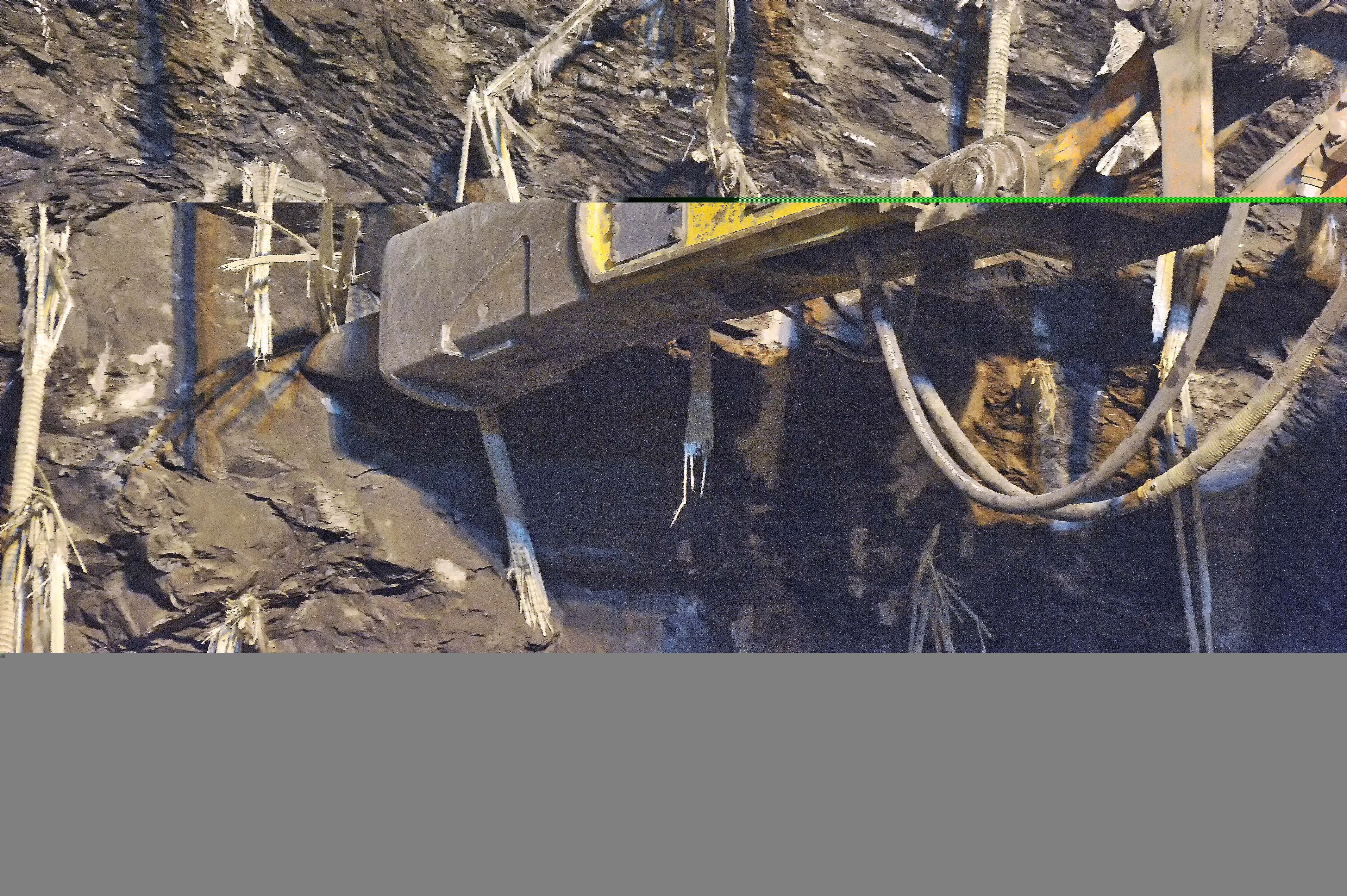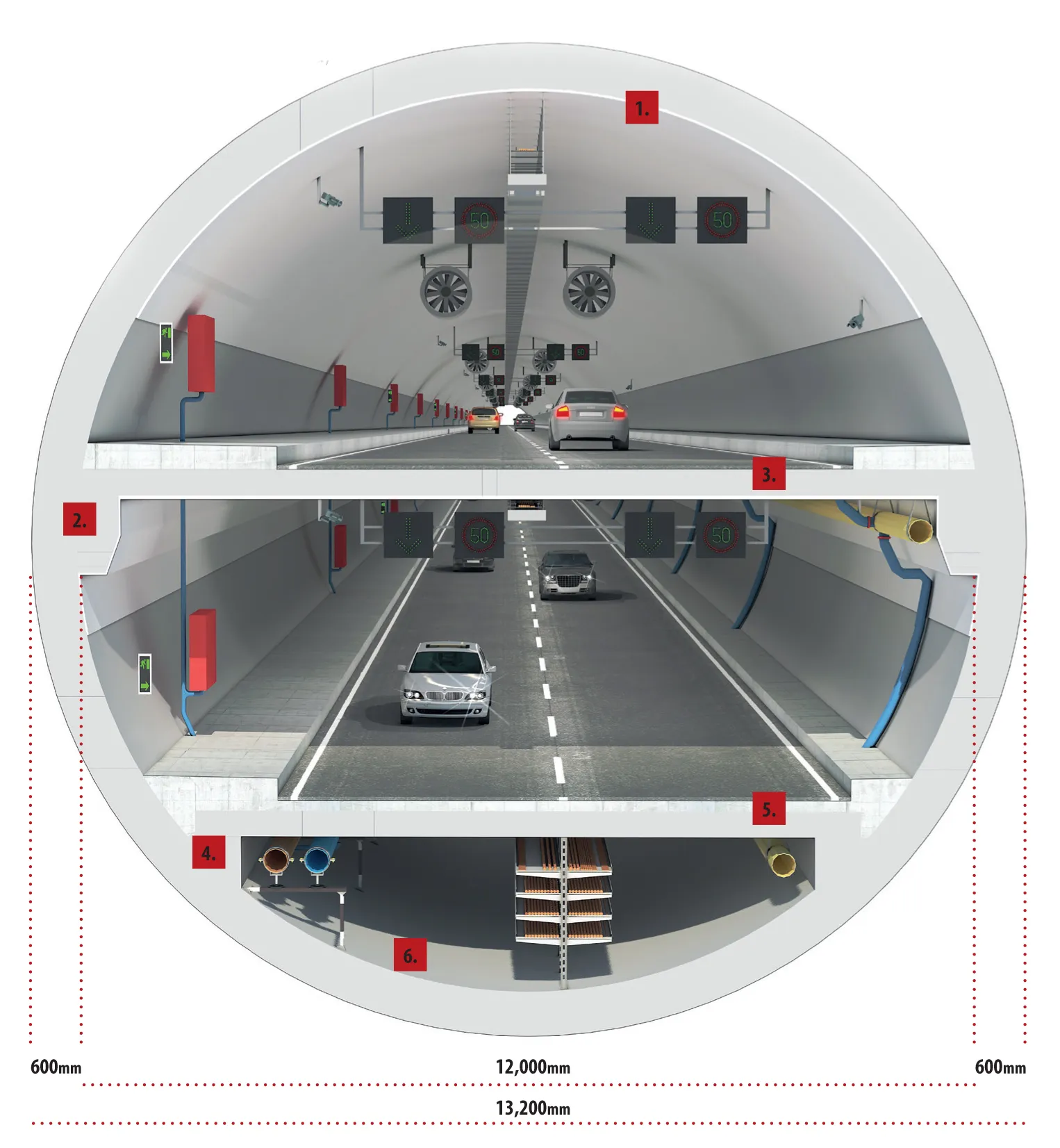The tunnelling sector remains one of the most active segments of the construction industry worldwide, fuelling demand for equipment
However, there have been issues with the efficiency of the selection process for the most suitable tunnelling method for a project in the past.
With this in mind, the Italian hydraulic breaker manufacturer Indeco has been working on a new algorithm that allows a contractor to optimise the tunnelling method selection. The firm said that this system has been developed becau
December 11, 2015
Read time: 5 mins

The tunnelling sector remains one of the most active segments of the construction industry worldwide, fuelling demand for equipment
However, there have been issues with the efficiency of the selection process for the most suitable tunnelling method for a project in the past.
With this in mind, the Italian hydraulic breaker manufacturer237 Indeco has been working on a new algorithm that allows a contractor to optimise the tunnelling method selection. The firm said that this system has been developed because the tunnelling industry often opts for the use of tunnel boring machines (TBMs), without fully considering other methods and their potential benefits.
TBMs are highly efficient in the right tunnelling application and have achieved major successes on many jobsites. The UK’s Crossrail project has shown how these massive machines can bore long tunnel stretches through relatively homogenous conditions, both on schedule and within budget.
But these machines are not versatile and cannot cope with major changes in geological conditions. The problems faced by the Alaskan Way project in Seattle, for instance, have highlighted the inflexibility of TBMs when faced with unforeseen geological issues. The massive TBM, named Big Bertha, struck a 200mm diameter steel drill casing left over from exploratory work for the project and ground to a halt in late 2013. The TBM has now been recovered and is being restarted at the end of 2015 but the delays have resulted in huge cost increases for the construction of the 3.2km tunnel. With the benefit of hindsight it can be argued that the project’s delays and higher cost could have been averted had the consultants suggested another tunnelling method, such as the cut-and-cover approach that was one of the initial proposals.
Indeco acknowledges that while TBMS have their place in the right application, other tunnelling methods can also offer benefits. Indeco’s marketing and commercial manager, Michele Vitulano, said that his research showed that Italian contractors in particular are more likely to use hydraulic breakers in tunnelling jobs than firms in other countries. This made him ask, “Why are Italian companies working like that?”
One answer was that Italy’s complex geology makes the use of breakers a must for many large tunnelling projects. The country does suffer from seismic activity, particularly in the south, as well as having heavily fractured rock in many areas. Overall, conditions vary too greatly to permit the use of TBMs in all but a few Italian tunnelling projects. Instead, excavators fitted with breakers, sometimes supplemented by roadheading machines or drill-and-blast equipment, tend to be preferred. Hydraulic breakers began to be used in Italy for tunnelling work in the 1980s as the units improved in terms of reliability and efficiency. Even in projects using drilling and blasting as the primary means of excavation, excavators with breakers may also be employed for stretches where rock conditions make this necessary. Hydraulic breakers are comparatively inexpensive, as well as being reliable and versatile. A TBM by comparison is highly expensive to purchase and also requires considerable logistics to supply and install on site. Vitulano commented, “The breaker is seen as a competitor to drilling and blasting, but it is not. It is either an assistant, or an alternative.”
He said that TBMs are highly efficient in the right conditions and have achieved major successes in a number of projects. Unexpected changes in rock hardness or abrasion, for example, can result in unprecedented cutter wear, increasing the need for replacement and reducing utilisation, with significant implications for tunnelling costs. More difficult conditions can also result in drive systems overheating, with major implications for TBM productivity and, in some instances, reliability. He said, “It’s an inflexible way of building tunnels. If something goes wrong, you’re stuck. Flexibility in tunnelling is a key factor. When you use a TBM you have to be sure everything goes right because you have no flexibility.”
Mauro Amato, product and project manager at Indeco, explained that the firm has developed its Analytical Hierarchy Process (AHP), providing a simplified process for selecting the best excavation method for a tunnelling project.
When fitted to an excavator, a hydraulic breaker provides a highly versatile method. It can be used as a back-up to a TBM for difficult tunnelling conditions, as well as playing a similar role with drilling and blasting methods. Alessandro Ciccolella, research and development manager at Indeco said, “Using a breaker, a contractor can follow fault lines of the rock and increase productivity. It is a precision tool that allows selective excavation.” He added, “There is a risk factor with a TBM that is totally overlooked by the tunnelling industry.”
What the AHP system provides is a set of principles that allow a consultant first to deconstruct the challenges set by a tunnelling project. Users can compare different tunnelling methods as the system provides a flexible method to evaluate the best possible solution for a project.
Using a breaker allows the contractor to follow fault lines and increase productivity in rock conditions that are not homogenous. Vitulano said, “It is a precision tool that allows selective excavation.”
Reliability is high meanwhile and as the units are not purpose-designed, they can be sold on after a project is complete. Productivity can be high using the breaker and excavator combination, too. On the construction of a 2.3km tunnel for the S7 route in Italy with a face of 136-142m2 and rock hardness of 50–70Mpa, peak production has been from 6m to 7m/day, with average production rates of 3.5m–4m/day.
Drilling and blasting can also be productive. Some years ago, Norwegian contractor SNSK took just 11 months to construct a 5.6km long tunnel wide enough for two on–off highway Volvo tipper trucks to pass each other.
According to Indeco using a breaker and excavator in tunnelling, with drilling and blasting equipment for stretches of hard rock, offers a versatile solution. Similarly, employing drilling and blasting in hard rock conditions and then having an excavator with a breaker for stretches of faulted rock, offers an effective tunnelling method.
Vitulano added, “Blasting and breaking are not tunnelling methods of the past. That’s what we want to highlight.”
However, there have been issues with the efficiency of the selection process for the most suitable tunnelling method for a project in the past.
With this in mind, the Italian hydraulic breaker manufacturer
TBMs are highly efficient in the right tunnelling application and have achieved major successes on many jobsites. The UK’s Crossrail project has shown how these massive machines can bore long tunnel stretches through relatively homogenous conditions, both on schedule and within budget.
But these machines are not versatile and cannot cope with major changes in geological conditions. The problems faced by the Alaskan Way project in Seattle, for instance, have highlighted the inflexibility of TBMs when faced with unforeseen geological issues. The massive TBM, named Big Bertha, struck a 200mm diameter steel drill casing left over from exploratory work for the project and ground to a halt in late 2013. The TBM has now been recovered and is being restarted at the end of 2015 but the delays have resulted in huge cost increases for the construction of the 3.2km tunnel. With the benefit of hindsight it can be argued that the project’s delays and higher cost could have been averted had the consultants suggested another tunnelling method, such as the cut-and-cover approach that was one of the initial proposals.
Indeco acknowledges that while TBMS have their place in the right application, other tunnelling methods can also offer benefits. Indeco’s marketing and commercial manager, Michele Vitulano, said that his research showed that Italian contractors in particular are more likely to use hydraulic breakers in tunnelling jobs than firms in other countries. This made him ask, “Why are Italian companies working like that?”
One answer was that Italy’s complex geology makes the use of breakers a must for many large tunnelling projects. The country does suffer from seismic activity, particularly in the south, as well as having heavily fractured rock in many areas. Overall, conditions vary too greatly to permit the use of TBMs in all but a few Italian tunnelling projects. Instead, excavators fitted with breakers, sometimes supplemented by roadheading machines or drill-and-blast equipment, tend to be preferred. Hydraulic breakers began to be used in Italy for tunnelling work in the 1980s as the units improved in terms of reliability and efficiency. Even in projects using drilling and blasting as the primary means of excavation, excavators with breakers may also be employed for stretches where rock conditions make this necessary. Hydraulic breakers are comparatively inexpensive, as well as being reliable and versatile. A TBM by comparison is highly expensive to purchase and also requires considerable logistics to supply and install on site. Vitulano commented, “The breaker is seen as a competitor to drilling and blasting, but it is not. It is either an assistant, or an alternative.”
He said that TBMs are highly efficient in the right conditions and have achieved major successes in a number of projects. Unexpected changes in rock hardness or abrasion, for example, can result in unprecedented cutter wear, increasing the need for replacement and reducing utilisation, with significant implications for tunnelling costs. More difficult conditions can also result in drive systems overheating, with major implications for TBM productivity and, in some instances, reliability. He said, “It’s an inflexible way of building tunnels. If something goes wrong, you’re stuck. Flexibility in tunnelling is a key factor. When you use a TBM you have to be sure everything goes right because you have no flexibility.”
Mauro Amato, product and project manager at Indeco, explained that the firm has developed its Analytical Hierarchy Process (AHP), providing a simplified process for selecting the best excavation method for a tunnelling project.
When fitted to an excavator, a hydraulic breaker provides a highly versatile method. It can be used as a back-up to a TBM for difficult tunnelling conditions, as well as playing a similar role with drilling and blasting methods. Alessandro Ciccolella, research and development manager at Indeco said, “Using a breaker, a contractor can follow fault lines of the rock and increase productivity. It is a precision tool that allows selective excavation.” He added, “There is a risk factor with a TBM that is totally overlooked by the tunnelling industry.”
What the AHP system provides is a set of principles that allow a consultant first to deconstruct the challenges set by a tunnelling project. Users can compare different tunnelling methods as the system provides a flexible method to evaluate the best possible solution for a project.
Using a breaker allows the contractor to follow fault lines and increase productivity in rock conditions that are not homogenous. Vitulano said, “It is a precision tool that allows selective excavation.”
Reliability is high meanwhile and as the units are not purpose-designed, they can be sold on after a project is complete. Productivity can be high using the breaker and excavator combination, too. On the construction of a 2.3km tunnel for the S7 route in Italy with a face of 136-142m2 and rock hardness of 50–70Mpa, peak production has been from 6m to 7m/day, with average production rates of 3.5m–4m/day.
Drilling and blasting can also be productive. Some years ago, Norwegian contractor SNSK took just 11 months to construct a 5.6km long tunnel wide enough for two on–off highway Volvo tipper trucks to pass each other.
According to Indeco using a breaker and excavator in tunnelling, with drilling and blasting equipment for stretches of hard rock, offers a versatile solution. Similarly, employing drilling and blasting in hard rock conditions and then having an excavator with a breaker for stretches of faulted rock, offers an effective tunnelling method.
Vitulano added, “Blasting and breaking are not tunnelling methods of the past. That’s what we want to highlight.”









